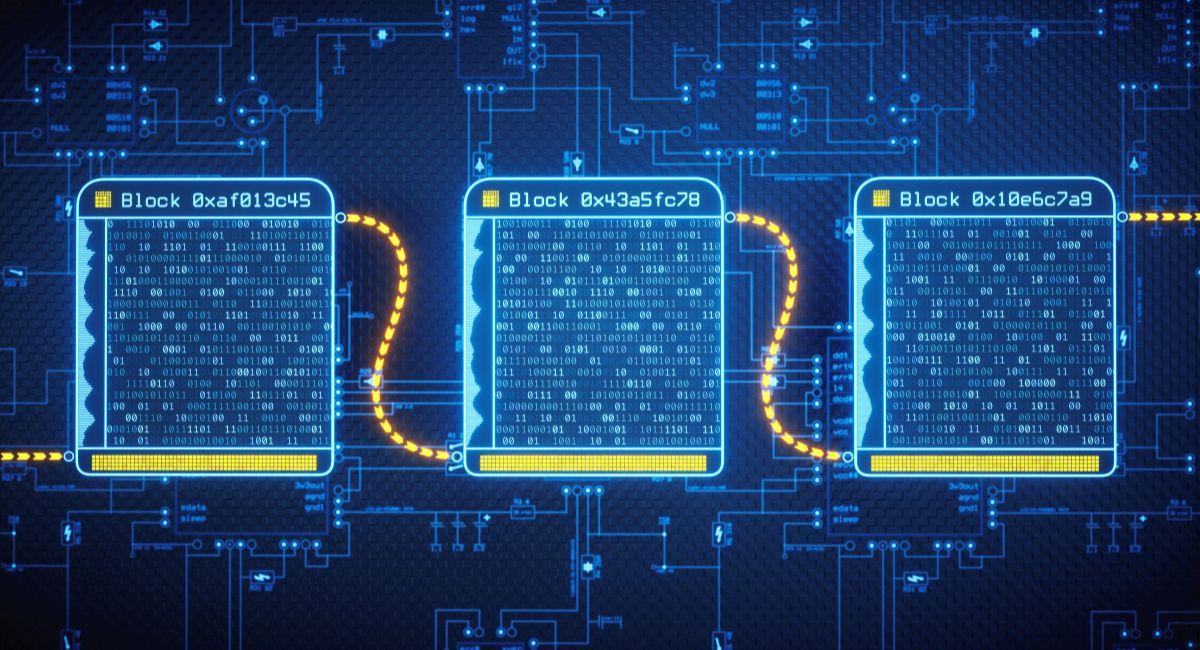What Is The Importance And Implications Of Block Size In The Context Of Blockchain

In the realm of blockchain technology, a block refers to a collection of transactions bundled together and added to the blockchain as a single unit. The block size, therefore, represents the amount of data or transactions that can be included in a single block. It is a critical parameter that has significant implications for the performance, scalability, and overall functionality of a blockchain network.
Components of Block Size:
- Transactions:
- The primary component of block size is the transactions it contains. Each transaction represents a record of value transfer or smart contract execution on the blockchain.
- Headers and Metadata:
- Apart from transaction data, a block includes headers and metadata. Headers contain information like the block’s timestamp, a reference to the previous block (hash pointer), and a nonce for mining purposes.
- Cryptographic Signatures:
- In public blockchain networks, cryptographic signatures accompany transactions to ensure security and authenticity. These signatures contribute to the overall size of a block.
Importance of Block Size:

The block size is a crucial parameter for several reasons, influencing the overall performance and scalability of a blockchain network. Here are key aspects highlighting its importance:
1. Transaction Throughput:
- Impact: Larger block sizes allow for more transactions to be processed simultaneously.
- Importance: Increased transaction throughput is vital for handling growing network demand, ensuring that the blockchain can accommodate a higher volume of transactions within a given time frame.
2. Scalability:
- Impact: Scalability refers to a blockchain’s ability to handle an increasing number of users and transactions without compromising performance.
- Importance: An optimal block size is essential for achieving scalability. It enables the network to scale efficiently, accommodating more users and applications without experiencing congestion.
3. Transaction Confirmation Times:
- Impact: The block size influences the time it takes for a transaction to be confirmed and added to the blockchain.
- Importance: Smaller block sizes may result in longer confirmation times, affecting user experience. Larger blocks can expedite the confirmation process, especially during periods of high network activity.
4. Network Security:
- Impact: The block size affects the network’s security and resistance to certain types of attacks.
- Importance: While larger blocks enhance transaction capacity, they may also introduce challenges related to network security and decentralized consensus. Striking a balance is crucial to maintain network integrity.
5. Storage Requirements:
- Impact: Larger block sizes result in increased data storage requirements for nodes participating in the blockchain network.
- Importance: As the blockchain grows, nodes must store the entire transaction history. Balancing block size helps manage storage requirements, ensuring broader participation in the network.
6. Mining Centralization:
- Impact: The block size can influence the centralization of mining activities.
- Importance: Extremely large blocks might favor well-established, powerful mining entities, potentially leading to centralization concerns. Finding an optimal size helps maintain a more decentralized and secure mining landscape.
Also, read – Emerging Trends In Blockchain Scalability: A Glimpse Into The Future
Understanding Scalability:

Scalability in the context of blockchain refers to the system’s ability to handle an increasing volume of transactions or data while maintaining optimal performance and efficiency. It is a critical aspect that determines how well a blockchain network can accommodate growth, handle higher transaction throughputs, and scale to meet the demands of a growing user base.
Key Components of Scalability:
- Transaction Throughput:
- Scalability involves increasing the capacity of a blockchain network to process a higher number of transactions per second (TPS) or within a given time frame.
- Network Capacity:
- The ability of the network to handle a larger number of nodes and participants, ensuring that the system remains decentralized as it scales.
- Data Storage and Management:
- Efficient storage and retrieval of data as the blockchain grows, ensuring that the increasing volume of information does not hinder performance.
- Consensus Mechanism:
- The consensus mechanism employed by the blockchain, as different mechanisms have different implications for scalability. For example, Proof of Work (PoW) faces challenges with high energy consumption and limited throughput.
Why Scalability Matters:
1. Increased Adoption:
- Scalability is crucial for widespread blockchain adoption. As more users join the network and engage in transactions, the blockchain must efficiently accommodate the growing demand to remain viable.
2. User Experience:
- A scalable blockchain ensures a positive user experience by minimizing transaction confirmation times and reducing the likelihood of network congestion during periods of high activity.
3. Business Applications:
- Scalability is essential for blockchain applications in various industries. For example, in finance, a scalable blockchain can support a high-frequency trading platform, while in supply chain management, it can handle the complexities of tracking goods across a global network.
4. Cost Efficiency:
- Scalability contributes to cost efficiency by allowing more transactions to be processed without a proportional increase in fees. This is particularly important for maintaining competitiveness and accessibility.
5. Decentralization:
- Maintaining decentralization is a key challenge in scalability. A truly scalable blockchain should ensure that increasing the number of participants or nodes does not compromise the decentralized nature of the network.
6. Innovation and Development:
- Scalability fosters an environment conducive to innovation and development. Developers can create more complex and feature-rich decentralized applications (DApps) when they can rely on a scalable blockchain infrastructure.
7. Interoperability:
- Scalability plays a role in achieving interoperability between different blockchain networks. Cross-chain transactions and communication become more feasible with scalable solutions.
Relationship Between Block Size and Scalability in Blockchain

The relationship between block size and scalability is a fundamental aspect in the design and performance of blockchain networks. The block size, representing the amount of data a block can contain, has a direct impact on the scalability of a blockchain. Understanding this relationship is crucial for addressing the challenges associated with increasing transaction throughput and accommodating a growing user base.
How Block Size Influences Scalability:
1. Transaction Throughput:
- Direct Impact: Larger block sizes generally allow for more transactions to be included in each block.
- Scalability Connection: Increased transaction throughput contributes to the scalability of the blockchain, as the network can process a greater number of transactions in a given time frame.
2. Confirmation Times:
- Direct Impact: Smaller block sizes may result in longer confirmation times for transactions.
- Scalability Connection: Larger blocks can expedite the confirmation process, reducing the time it takes for transactions to be confirmed and added to the blockchain. This is crucial for maintaining a responsive and user-friendly system.
3. Network Congestion:
- Direct Impact: Small block sizes may lead to network congestion during periods of high transaction activity.
- Scalability Connection: Larger block sizes help alleviate network congestion by accommodating a larger number of transactions. This is especially important for scalability during peak usage.
4. Storage Requirements:
- Direct Impact: Larger block sizes result in increased data storage requirements for nodes participating in the network.
- Scalability Connection: While larger blocks contribute to increased scalability by accommodating more transactions, managing the growing storage requirements becomes a scalability challenge. Finding a balance is essential to ensure broader participation in the network.
5. Mining Centralization:
- Direct Impact: Extremely large blocks might favor well-established, powerful mining entities.
- Scalability Connection: Striking a balance in block size is crucial to maintaining a more decentralized and secure mining landscape, which is integral to the overall scalability and security of the blockchain.
Challenges and Considerations:

1. Network Congestion vs. Mining Centralization:
- Challenge: Balancing the need for larger blocks to alleviate network congestion while avoiding centralization risks in mining.
- Consideration: Protocols and consensus mechanisms must carefully consider the potential trade-offs between these factors to achieve optimal scalability.
2. Decentralization vs. Storage Requirements:
- Challenge: Balancing the need for larger blocks to enhance decentralization with the associated increase in storage requirements.
- Consideration: Dynamic solutions, such as pruning or sharding, may be explored to manage storage requirements while preserving decentralization.
3. Consensus Mechanism Impact:
- Challenge: Different consensus mechanisms may respond differently to changes in block size.
- Consideration: Understanding the specific implications of block size adjustments on the chosen consensus mechanism is vital for maintaining the network’s integrity and scalability.
4. Dynamic Block Size Solutions:
- Challenge: Implementing dynamic block size solutions that can adapt to varying network conditions.
- Consideration: Protocols exploring dynamic adjustments to block sizes based on network demand can address scalability challenges effectively.
Solutions and Future Trends:
 1. Segregated Witness (SegWit):
1. Segregated Witness (SegWit):
- Solution: SegWit separates transaction signatures from transaction data, effectively increasing the number of transactions that can be included in a block without directly impacting block size.
2. Layer-2 Scaling Solutions:
- Solution: Technologies like the Lightning Network enable off-chain scaling, allowing for faster and more cost-effective transactions without significantly impacting on-chain block size.
3. Dynamic Block Size:
- Solution: Some blockchain networks explore dynamic block size adjustments based on network conditions, ensuring optimal throughput without compromising decentralization.
4. Research and Development:
- Solution: Ongoing research and development efforts focus on finding innovative solutions to address scalability challenges, considering factors beyond block size, such as network architecture and consensus algorithms.




























































